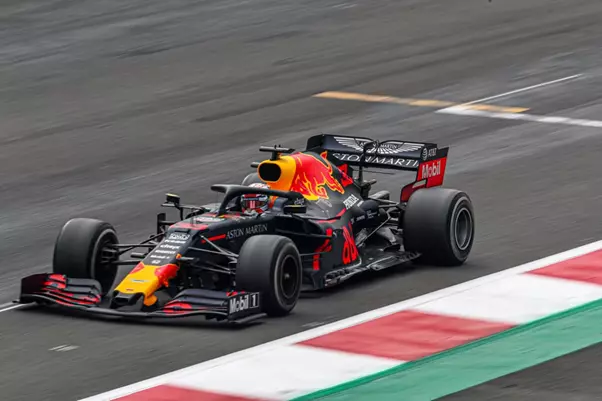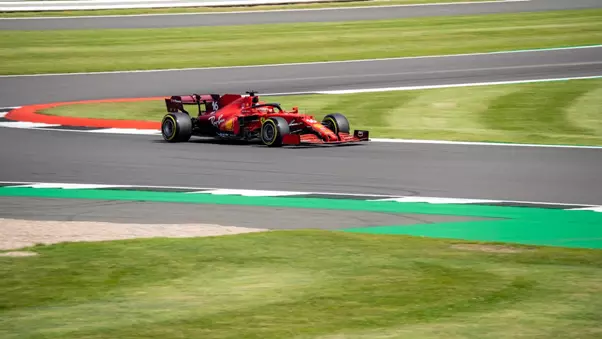
Formula 1 racing is perhaps the most technologically advanced of the existing sports. It is on racing cars that innovative solutions are tested, which almost instantly turn out to be on ordinary, civilian cars available to each of us. We decided to recall what technologies motorsport gave ordinary cars.
Shift paddles
Today you can’t fish absolutely anyone with shift paddles – many cars equipped with an automatic or robot have them. And the system appeared for the first time on the formula Ferrari 640 of the 1989 model, equipped with a semi-automatic transmission. The car driven by Nigel Mansell won his first start. Gradually, the system got rid of the direct mechanical connection with the box, and the formula petals completely gave way to buttons.
If you are not the proud owner of such a car, you can rent any sports car from a rental company such as evolve.ae, for example, and experience how it works. In such hiring salons, there is always a wide selection of rental cars of this class for lovers of speed and exclusivity.
Disc brakes
Disc brakes have long ceased to be the privilege of expensive cars. Today they are put even on the cheapest entry-level cars, for example, the Hyundai Solaris. Modern bicycles are also equipped with disc brakes. Meanwhile, such mechanisms appeared not so long ago, but they are obliged to be developed by the “Queen of Motorsport”.
Drum brakes, by virtue of their design, are heavy and relatively ineffective. These circumstances led the engineers to the idea of creating a fundamentally different design – lighter and more efficient.
In 1951, the first disc brake system debuted on the BRM Type 15. Two years later, the design was picked up at Jaguar: the team installed such brakes on the C-Type participating in Le Mans and won. And in civilian production, disc brakes came along with the legendary “Frenchman”, Citroen DS, in 1955.
Carbon bodies and chassis elements
Initially, carbon fiber was first used in the production of body elements. Naturally, on racing cars. For example, the 1975 Embassy Hill GH1 (Lola T321) team car used this material in the rear wing mounts, and carbon began to be really widely used in 1981, when the McLaren MP4 / 1 racing car was built, created under the patronage of John Barnard. The car was built around a carbon-fiber monocoque. This technology is used in Formula 1 to this day.
The first civilian car of this design was the McLaren F1 supercar built-in 1992. Automaker Ford has gone even further – it intends to make subframes for road cars from carbon fiber.
RCP with two clutches
The PDK preselective transmission first appeared back in the 1980s with the German Porsche. Having been tested on racing models 956 and 962, the technology migrated to civilian cars only 30 years later.
Today, only a deaf person has never heard of a robotic dual-clutch transmission: it is used not only on all models of the German premium brand but also, in a more simplified form, on related Volkswagen, Audi, Skoda, and Seat.
Steering wheel control buttons
By the way, about the buttons on the steering wheel. They also came from the world of Formula 1, where almost all controls are focused precisely on the “steering wheel”. At first, ordinary motorists were given the opportunity to control the car radio, and then a whole scattering of various buttons and knobs appeared on the steering wheels of civilian cars. With their help, you can control, for example, cruise control – now it is not necessary to use the gas pedal.
Limited-slip differential
The limited-slip differential, which is used today even on civilian cars, also owes the appearance of the Grand Prix and personally to Ferdinand Porsche. The system first appeared in 1932 thanks to the developments of ZF. Back then, Auto Union used a system to automatically transfer more torque to the wheel with the best grip. Subsequently, the system acquired many forms and modifications and began to be used on both axes of a wide variety of machines.

Active suspension
The first active suspension system was used on a Lotus racing car in 1985, the same one that was piloted by the great Ayrton Senna. The advantage of the chassis turned out to be so impressive that the system vied with each other to copy all the rivals without exception. Of course, it soon migrated to civilian cars. So in 1990, the Infiniti Q45 FAS was released. The technology turned out to be very expensive, so the scope of its application is still motorsport and business-class equipment.